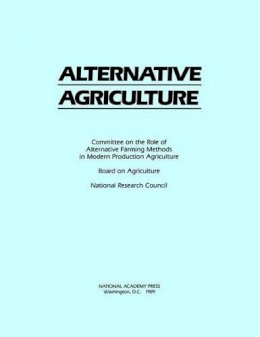

Alternative Agriculture
National Research Council
More and more farmers are adopting a diverse range of alternative practices designed to reduce dependence on synthetic chemical pesticides, fertilizers, and antibiotics; cut costs; increase profits; and reduce the adverse environmental consequences of agricultural production.
Alternative Agriculture describes the increased use of these new practices and other changes in agriculture since World War II, and examines the role of federal policy in encouraging this evolution, as well as factors that are causing farmers to look for profitable, environmentally safe alternatives. Eleven case studies explore how alternative farming methods have been adopted—and with what economic results—on farms of various sizes ... Read more
Table of Contents- Front Matter
- Part One
- Executive Summary
- 1 Agriculture and the Economy
- 2 Problems in U.S. Agriculture
- 3 Research and Science
- 4 Economic Evaluation of Alternative Farming Systems
- Part Two
- The Case Studies
- 1 Crop and Livestock Farming in Ohio: The Spray Brothers
- 2 A Mixed Crop and Livestock Farm in Southwest Iowa: The BreDahl Farm
- 3 A Diversified Crop and Livestock Farm in Virginia: The Sabot Hill Farm
- 4 A Mixed Crop and Livestock Farm in Pennsylvania: The Kutztown Farm
- 5 Crop-Livestock Farming in Iowa: The Thompson Farm
- 6 Tree Fruits, Walnuts, and Vegetables in California: The Ferrari Farm
- 7 Florida Fresh-Market Vegetable Production: Integrated Pest Management
- 8 Fresh Grapes in California and Arizona: Stephen Pavich & Sons
- 9 Integrated Pest Management in Processing Tomatoes in California: The Kitamura Farm
- 10 Livestock Farming in Colorado: Coleman Natural Beef
- 11 Rice Production in California: The Lundberg Family Farms
- Glossary
- Index
Product Details
About National Research Council
Reviews for Alternative Agriculture
